Hoi An, a Vietnamese city with everything that a culture and history lover is looking for in a destination. Delicious food, mesmerizing theatrical performances, two-hundred-year-old architectural gems, and thousand-year-old ancient ruins, the best cooking classes in Vietnam, bike rides through rice fields, and lazy boat rides down mangrove-lined rivers. With so many things to do in Hoi An, how do you squeeze all of it into five days? In this Hoi An itinerary, I’ll share with you exactly how to see it all as well as give you tips on where to eat, stay, and get around Vietnam’s most charming destination.
Can’t travel just yet? Check out my list of 25 of the best books on Vietnam—a great way to travel without leaving the safety of your living room couch.
Disclosure: This post may contain affiliate links. As an Amazon Associate and a Bookshop.org Associate, I earn from qualifying purchases. Please see this website’s Disclosure for more info.
In This Post, You’ll Find…
- Day 1: Old Town
- Day 2: Bike Ride through the Countryside
- Day 3: Day Trip to the Cham Ruins
- Day 4: Day Trip to Ba Na Hills
- Day 5: Cooking Class
3. More things to do in Hoi An
4. Things to do in the evening in Hoi An
The History of Hoi An
One of the many things I love about Hoi An is its rich history: it was a major destination along the maritime Silk Road. Merchants and missionaries from both East and West came to either trade their goods or spread their beliefs. I imagine Hoi An was the seventeenth or eighteenth-century version of colonial Singapore where locals mingled with Japanese, Chinese, Arabs, Indians, and Europeans.
The Champa Kingdom
Hoi An had been an important trading port for centuries all the way back to when it was ruled by the Chams, a sea-faring ethnic group that originated on the island of Borneo. The Chams first took control of the area from the Chinese in 192 AD. They eventually established a united kingdom that ruled over central Vietnam until 1471.
The Chams controlled the spice and silk trade between China, India, Indonesia, and Arabia. While they were interacting with foreigners along the Silk Road, they became influenced by other cultures, especially India. The Chams became Hindus and adopted Sanskrit along with their own writing system.
You can visit the Cham’s ancient ruins of their religious capital on Day 4 of this itinerary.
Here Comes the Vietnamese
In 1471, the Dai Viet (the Vietnamese-controlled north) conquered Central Vietnam, annexed it, and drove out the Chams. The Vietnamese began migrating to the area in the 1500s when the Vietnamese Emperor sent Lord Hoang Nguyen to govern over it.
Unlike the northerners, the Nguyen family were commerce-driven, and as a result, the economy of the area flourished in the 1600s and 1700s.
Hoi An especially profited not just from the family’s rule, but also from its excellent location at the confluence of one of Vietnam’s greatest river basins. This location enabled it to connect local and regional trade with the outside world.
Farmers from Central Vietnam would bring their cinnamon and ginseng down the Thu Bon River to the port of Hoi An to be sold and bought by merchants from China, Japan, Arabia, and Europe.
In turn, these foreign merchants would set up temporary homes, businesses, and temples in Hoi An to wait for the monsoon winds to change direction, which was when they could return home. They also brought their culture with them—their architectural styles, food, language, and beliefs. Then in the 1600s, the Ming Dynasty in China collapsed, and many southern Chinese decided to settle permanently in Hoi An.
You can see a lot of these foreign influences in Hoi An’s Old Town where you’ll find 200 to 300-year-old homes, businesses, and temples of these foreigners.
The End of Hoi An as an International Trading Center
Things fell apart for Hoi An in the mid-1800s. The Thu Bon silted up, making it too difficult to bring goods from the interior to the port.
Then the French invaded Vietnam and forced concessions on the Vietnamese Emperor. One of these was to give France control of Da Nang, which eventually replaced Hoi An as the center of trade in Central Vietnam. This was the end of Hoi An as a cosmopolitan trading center.
As a result of all this, time sort of stopped in Hoi An. What was built by the Chinese and Japanese—the temples, clan associations, bridges, and homes—weren’t torn down to be replaced by more “modern” or colonial buildings.
Luck for Hoi An’s traditional architecture continued when the Americans and the North agreed to leave Hoi An alone during the Vietnam War.
It wasn’t until after Vietnam opened up to international tourism in the 1990s and Hoi An was declared a UNESCO World Heritage Site in 1999 that people from all over the world returned to this charming city.
Nowadays, Old Town is teeming with tourists to the point that it sometimes feels like you’re at Disneyland. Still, there are ways to enjoy the destination. If you start exploring early in the morning, the streets are nearly empty. Visit the more touristy temples in the morning and the less touristy in the afternoon and take bike trips to the countryside or kayak trips down its many rivers.
Hoi-An Itinerary
I recommend spending 5 days in Hoi-An, using the city as a base for exploring some of the other important historical and cultural sights around the area.
This 5-day Hoi An itinerary can be done in any order. But watch the weather! It rains a lot here and since most things to do in Hoi An take place outdoors, you’ve got to plan the city’s few indoor activities for when it’s the rainiest.
- Day 1 – Exploring Old Town
- Day 2 – Bike ride on the many islands
- Day 3 – Day trip to the Cham Ruins
- Day 4 – Day Trip to Ba Na Hills
- Day 5 – Cooking Class
Hoi An Itinerary: Day 1 – Exploring Old Town
The most pleasurable thing to do in Hoi An is to just wander around the narrow lanes of Old Town admiring and visiting the traditional shops and temples and imagining you’re back in the 1700s when the city was a vibrant trading mecca. If you put on some rose-colored glasses, you can further pretend that those people from China, Japan, Europe, and the Middle East aren’t tourists buying souvenirs like you but traders coming to sell their tea and opium and buy cinnamon and ginseng to take back home.
You can see from the above map that Old Town is only a few blocks wide and several blocks long. You can tour Old Town quickly in half a day. It’ll take a full day if you break your tour up with shopping, visiting tailor shops, eating, and chilling out in cafés.
The best time to visit to avoid the tourists is to get out and about at around 7:00 am or at the latest 8:00 (tourists start coming in at 9:00 am).
You’ll also want to return to Old Town at night when the city is all lit up with colorful lanterns. At night the throngs of tourists flocking to the restaurants and bars give the town a lively and fun atmosphere but thankfully without it feeling cheap and sleazy.
Make sure you get a photo of the town from the bridge. A tripod will help you immensely here.
Entrance Fee for Old Town: You need to buy an Old Town Entrance Ticket and keep it with you as you wander the area. The ticket costs 120,000 VND (US$5). The money goes toward the maintenance and preservation of the heritage buildings in Old Town. It allows you to wander the streets of Old Town and visit up to five sightseeing places (museums and heritage buildings). If you use up your five Old Town tickets, you can still enter more attractions. You’ll just need to pay, which is generally not too much. The ticket is good for as long as you stay in Hoi An.
You can buy the ticket at kiosks located around the outskirts of Old Town.
The best way to see Old Town is to wander aimlessly along the streets and enter any place that appeals to you. That being said, since you’ve only got five Old Town tickets, here are the places I would definitely make sure I visited:
- Japanese Covered Bridge – Doesn’t require a ticket
- Heritage Homes – I list four of that I liked; I recommend visiting at least two. Make one of them the Tan Ky House. Be aware that some homes are little more than souvenir shops, which end up not being worth one of your five tickets.
- Chinese Assembly Halls and Temples – There are five in Hoi An; the two best are the Cantonese and Fujian Assembly Halls
- Pagodas – There are several pagodas that don’t require a ticket.
- Museums – There are two museums on the history of Hoi An.
PRO TIP: Old Town is the area where you’ll find most of the tailor shops (around 200). You can get pretty much anything made here: suits, shirts, dresses, etc. The shops vary in size, quality, and service, so check reviews online first. Not everyone comes out satisfied from their experience. Visit a tailor shop on your first day in Hoi An with a photo of what you want. Take your time choosing the style and fabric. Although they can create something for you within 24 hours, you’ll have to return two or three times for fittings. You can get more tips on visiting tailors in Hoi An from Hidden Hoi An.
1. Japanese Covered Bridge
- OPEN: 24/7
- COST: Free
- BUILT: 1590s
- LOCATION: Google Maps
Japanese traders flocked to Hoi An during the 1500s. Then they stopped coming when the Tokugawa Shogun closed Japan in 1630, forbidding any Japanese from leaving the country and any foreigners from entering.
Before that year, the Japanese community lived in their own enclave in Hoi An. They built the Japanese Covered Bridge to link their section with the Chinese quarter.
Unfortunately, many buildings in the Japanese quarter were destroyed when the Tay Son Rebellion sparked a civil war in Vietnam in the 1700s.
You can cross the bridge as many times as you like without it costing you one of the Old Town Tickets.
2. Historic Homes
Make sure to visit at least one of the historic homes in Old Town to see how people lived 200 or 300 years ago. Many of the homes were built by merchants in the 1700s. Some are still occupied by the family who built them, while others have been turned into souvenir shops, tailor shops, or cafes.
Here are some of my favorites:
2.1. Old House of Tan Ky
- OPEN: 8:30 am – 5:45 pm
- COST: Old Town Ticket
- BUILT: 1741
- LOCATION: Google Map
The Tan Ky House is the most beautiful house in Hoi An. It’s a good way to see how wealthy merchants lived in the 1700s. Built by a Vietnamese family that was involved in the agricultural trading business, the house has been the home of seven generations of the Le family. The family still lives upstairs.
The back of the house faces the Thu Bon River, a perfect location for merchants to load and unload their products to and from trading ships and store them in the family’s warehouse.
You can see elements of the different cultures that once resided in Hoi An during its trading days like the Japanese ceiling and the Chinese script.
The ground floor floods every year during the monsoon season. Look out for the marks on the wall indicating how high the floods get.
2.2. The Old House of Phung Hung
- OPEN: 8:30 am – 6:00 pm
- COST: Old Town Ticket
- BUILT: 1780
- LOCATION: Google Maps
Built in 1780 by a Vietnamese merchant, Phung Hung Old House is a typical Hoi An traditional style home. The name of the home, “Phung” means prosperity.
The family sold products such as cinnamon, silk, and pepper.
You can go out onto the second-floor balcony.
2.3 Quan Thang House
- OPEN: unknown
- COST: Old Town Ticket
- BUILT: 1600s
- LOCATION: Google Maps
The Quan Thang house is definitely worth a visit for those interested in history and architecture. Built in the 1600s by a Chinese merchant, the old house of Quan Thang is one of the oldest buildings in Hoi An.
When you stand outside the house, it’s easy to be unimpressed by the building’s small façade. But once you step inside, the house is huge. It’s long and narrow, going far back through room after courtyard after room. Originally, it went all the way to the next street over, Nguyen Thai Hoc Street. The back end was used as a warehouse. The family could conveniently haul goods in and out of the warehouse entrance to and from the wharf nearby.
2.4 Diep Don Nguyen House
- OPEN: unknown
- COST: Old Town Ticket
- BUILT: late 1800s
- LOCATION: Google Maps
This interesting shop/home was built by a wealthy Chinese merchant and was once a pharmacy selling Chinese medicine along with other sundries like books and clothing.
3. Chinese Assembly Halls
One of the largest immigrant groups in Hoi An was from southeastern China (the Han and Hakka people from Fujian, Chaozhou, Canton, and Hainan). Most of them first came to Hoi An to trade. Then when China became unstable in the 1600s, many of them settled permanently in the city.
As in many Chinese overseas communities, the Chinese immigrants in Hoi An built assembly halls, These halls were places where people from the same province could meet, get help settling down in Hoi An, and pray to their local deities. Each of the major regional immigrant groups have their own assembly hall in Hoi An.
3.1 Assembly Hall of the Fujian Chinese Congregation (Phuc Kien Assembly Hall / Temple)
- OPEN: 7:00 am – 5:00 pm
- COST: Old Town Ticket
- BUILT: 1692
- LOCATION: Google Maps
Make sure you save one of your five Old Town tickets for the Assembly Hall of the Fujian Chinese Congregation. The pink-colored gate is especially eye-catching.
The temple was originally built by Vietnamese locals in 1692 and eventually sold to immigrants who had fled Fujian province in China after the fall of the Ming Dynasty in the 1600s.
Fujian is a province directly across from Taiwan. The people from the southern part of the province speak the same dialect as those in Taiwan.
The temple is dedicated to Thien Hua (Mazu in Chinese), the goddess of the sea and protector of sailors and traders. You’ll often see Fujianese temples across Southeast Asia dedicated to this goddess.
3.2 Cantonese Assembly Hall (Quang Trieu)
- OPEN: 8:00 am – 5:00 pm
- COST: Old Town ticket
- BUILT: 1851
- LOCATION: Google Maps
The second assembly hall that you must visit is the Cantonese Assembly Hall, built in 1851 by the people from Guangdong (Canton) province. It was originally dedicated to the Goddess Thien Hau (protects sailors), but later changed to honor God Quan Cong (protects people from harm and misfortune).
It’s worth visiting this very popular temple despite the crowds. Come early to avoid them so you can appreciate this gorgeous temple when it’s quieter and less crowded.
3.3. Assembly Hall of the Hainan Chinese Congregation
- OPEN: 8:00 am – 5:00 pm
- COST: Old Town ticket
- BUILT: 1851
- LOCATION: Google Maps
Built for the immigrants from the island of Hainan, this hall is dedicated to the memory of the 108 Hainanese merchants who were killed because they were mistaken for being pirates.
3.4 Assembly Hall of the Chaozhou Chinese Congregation
- OPEN: 8:00 am – 5:00 pm
- COST: Old Town ticket
- BUILT: 1751
- LOCATION: Google Maps
Another assembly hall that you should visit is the one built for the people from the city of Chaozhou, in eastern Guangdong province.
This hall is worth visiting for its beautifully detailed carvings on the temple’s walls, ceiling, and doors.
3.5 Chinese All Community Assembly Hall
- OPEN: 8:00 am – 5:00 pm
- COST: Free
- BUILT: 1773
- LOCATION: Google Maps
This very colorful, small assembly hall is well worth a visit. Dedicated to the goddess Thien Hau, the hall is for all Chinese from Fujian, Chaozhou, Canton, and Hainan as well as the Hakka people.
4. Pagodas and Temples
The pagodas aren’t as interesting to visit as the assembly halls, but if you have time, stop in at least one of them. They generally don’t require an Old Town ticket.
4.1 Phuoc Lam Pagoda
- OPEN: 7:30 am – 9:30 pm
- COST: Free
- BUILT: unknown
- LOCATION: Google Maps
According to Lonely Planet, people often associate this Buddhist temple with a famous monk named An Thiem, who had once been a great general before becoming Buddhist. In order to pay for what he did on the battlefield, he “cleaned the Hoi An market for 20 years.” Later he became the head monk at the Phuoc Lam temple.
4.2 Chuc Thanh Pagoda
- OPEN: 8:00 am – 6:00 pm
- COST: Free
- BUILT: 1454
- LOCATION: Google Maps
Built in 1454, this is the oldest temple in Hoi An. Although it’s gone through several renovations, the original structure still exists.
This temple does not get many tourists as it’s 1.5 kilometers outside of Old Town.
4.3 Phap Bao Pagoda (Phac Hat Temple)
- OPEN: Temporarily closed
- COST: free
- BUILT: Unknown
- LOCATION: Google Maps
Phap Bao Pagoda (Phac Hat Temple) is a colorful Buddhist temple in Old Town. There’s a nice courtyard filled with plants, trees, and statues that you can visit to get away from the throngs of tourists.
This is a functioning temple, so be respectful. Dress appropriately.
4.4 Quan Cong Temple
- OPEN: Unknown
- COST: Old Town Ticket
- BUILT: 1653
- LOCATION: Google Maps
Quang Cong Temple was built in 1653 by Chinese and Vietnamese merchants. The temple is dedicated to Quan Cong, a famous general during the Three Kingdoms period in Chinese history. He symbolizes loyalty, sincerity, integrity, and justice.
You’ll know a temple is dedicated to him when you see a statue of a seriou red-faced man with a long beard and a long spear.
5. Museums
There are a couple of museums in Hoi An that you can visit.
5.1. Hoi An Museum of History and Culture
- OPEN: 7:00 am – 5:00 pm M-Sa; closed on Sundays
- COST: Old Town Ticket
- LOCATION: Google Maps
The museum has a range of artefacts including Cham pottery and ceramics and pottery as well as photos and drawings from Hoi An’s trading period.
The problem for foreign tourists is that the museum lacks explanations in English.
5.2. Sa Huynh Culture Museum
- OPEN: 8:00 am – 8:00 pm
- COST: Old Town Ticket
- LOCATION: Google Maps
If you’re interested in archaeology and the ancient history of Vietnam, visit the Sa Huynh Culture Museum. The museum has over 1,000 artifacts from the Sa Huynh culture, an ancient culture that lived in the area from 1,000 BC to 200 AD. Since similar artifacts were found in the Philippines, Thailand, and Borneo, it’s believed that trade was going on 2,000 years ago.
Hoi An Itinerary: Day 2 – Exploring the Countryside Around Hoi-An
On day 2 of this Hoi An Itinerary, you’ll be exploring the countryside around Hoi-An on an easy and relaxing bike tour with excellent guides from Heaven and Earth Tours.
There are other bike tours that you can take. I always recommend booking through your hotel or Klook so that you have someone to complain to or some website where you can leave a negative review. Here is a list of some tours through Klook.
- A five-hour bike tour of Cam Kim Island. You get to visit a pre-school and attend workshops on boat making, rice wine, and carpentry. You’ll also learn how to make rice paper. Includes lunch. (US$23)
- Visit 3 villages on this bike tour: Tra Que village, Thanh Ha pottery village, and Cam Kim village. Includes lunch. (US$37)
- Visit Tra Que village by bike on this tour. Includes lunch. (US$17)
I’ll describe the tour I took.
My tour began with a short and enjoyable boat ride across the Bon Thu Bon River to Cam Kim island. We brought our bikes on the boat with us.
We visited a variety of places that made local handicrafts and goods: bed mats, lacquerware, rice wine, and boats.
We biked around the countryside past rice fields and rivers and through villages.
We also had an opportunity to ride in one of the basket boats that they make on the island.
Over the entrance to one village was an archway topped with the photo of Ho Chi Minh and the words in Vietnamese, “There is nothing better than freedom.” I love history, so I got a kick out of seeing this evidence of the Vietnamese passion for their independence and the American failure to bomb the Vietnamese into submission.
We returned to Hoi An by a crowded public ferry.
Hoi-An Itinerary: Day 3 – Golden Bridge at Ba Na Hills
- OPEN: 7:00 am – 10:00 pm
- COST: 750,000 VND (US$32)
- LOCATION: Google Maps
- WEBSITE: https://banahills.sunworld.vn/en
Day 3 takes you to Ba Na Hills Amusement Park and its insta-famous Golden Bridge. The park is located in the mountains and accessed via a gondola ride.
The section of the park that the locals get a real kick out of is the replica of a medieval French village complete with cobblestoned streets, a Gothic cathedral, French gardens, and European style buildings.
There’s also some amusement park rides, loads of shops, a beer hall, and several restaurants serving European food.
The attraction that you see most often on Instagram is the bridge that is held up by two large stone hands called the Golden Bridge.
How to get from Hoi-An to Golden Bridge at Ba Na Hills:
Shuttle Bus from Hoi An: I recommend taking a shuttle service from Hoi An. The price is good and it won’t take you too long. You can buy bus tickets to Ban Na Hills through Klook.
Public Bus from Hoi An: You can also take a public bus. Cheap, but it’ll take you several hours round trip. At Ben Xe Hoi An Bus Station, take Bus No 1 and get off at Da Nang Central Bus Station. You’ll need to then take additional transportation to Ba Na Hills.
Private Transport from Hoi An: The most expensive way to get to Ba Na Hills is by private car. You can book your transport through Klook.
Hoi-An Itinerary: Day 4 – My Son Cham Ruins
Day 4 of this Hoi An itinerary is geared toward the history lover and anyone who’s fantasized about becoming the next Indiana Jones. It’s a visit to the Cham ruins at My Son, a UNESCO World Heritage Site.
The Chams were an ethnic group originally from Borneo. They ruled over Central Vietnam from 192 AD to 1471. Heavily influenced by Indian culture, they were predominantly Hindus.
Their religious center was at My Son. This was where state religious ceremonies were held and the Cham rulers were buried.
There were originally 70 Hindu temples built between the fourth and fourteenth centuries. Most of the temples were dedicated to Shiva. Unfortunately, many of the religious structures were destroyed during the war between Vietnam and the United States.
The ruins are interesting but don’t expect anything grand like those found at Angkor in Cambodia or Bagan in Myanmar. There are 20 temples remaining from the original 70.
Shop around for a good tour. I chose a tour from a travel agency in Old Town that turned out to be horrible. It was hard to understand the guide and his knowledge seemed rather superficial. He spent too much energy and time making sex jokes about the Chams.
I recommend booking through your hotel or Klook.
Here are some companies that do My Son tours:
- This tour company has two types of tours: early morning and later morning tours.
- You can do a tour of My Son that includes a boat ride back to Hoi An.
- You can also do a sunset tour of My Son. You leave in the early afternoon and return about 6:30 pm.
Another option that will give you more freedom to determine your itinerary is to hire a car and driver to take you to My Son. Ask at your hotel.
Indianization v. Sinicization of Southeast Asia
One of the most interesting aspects of Southeast Asian history and culture is how some people were influenced by China, while others by India.
Vietnam, Japan, Taiwan, and Korea were under the influence of China. Vietnamese was originally written using Chinese characters. The government used the Chinese Mandarin system of bureaucracy, whereby positions in the bureaucracy were determined by merit rather than money or family. Buddhism in Vietnam is Mahayana Buddhism, the same as in China, Korea, and Japan. In fact, northern Vietnam was a province of China at one time.
Other states like Cambodia, Indonesia, Thailand, and the Chams were influenced by India. These cultural exports included the Sanskrit writing system, Hinduism and Buddhism, as well as a caste system albeit less rigid than what one sees in India. These countries eventually became Theravada Buddhists.
Hoi-An Itinerary: Day 5 – Cooking Class
On your final day in Hanoi, I recommend taking a cooking class. Hoi An seems to have more cooking classes than any other place in Vietnam. And they’re wildly popular, probably because it rains so much during the height of the tourist season in Vietnam and people need somewhere to go that is indoors.
It’s also a good idea to schedule the cooking class for the last day in Hoi An rather than one of the day trips mentioned in this itinerary. First, the cooking classes are usually only half-day, so you can spend the afternoon doing some souvenir shopping.
Also, my bus out of Hoi An was leaving that evening around 6:15 pm. I didn’t want to be stuck in a van or bus on my way back from the Cham Ruins or Ba Na Hills.
That being said, there is something said for booking the class the day before the class when there’s a strong likelihood that it’s going to rain the next day. There aren’t many indoor things to do in Hoi An. However, booking a class at the last minute can be tricky. Although there are loads of cooking classes, the popular ones book up way in advance. I booked mine at the last minute and got in on the third most popular one.
Vy’s Market and Cooking Class
I took my cooking class at Vy’s Market, Hoi An’s version of a Singapore Hawker Centre or tasteful shopping mall food court but with Vietnamese food. Surrounding a seating area in the middle of the court are food stalls offering different kinds of local foods.
The class started with a tour of a public market where we were introduced to vegetables, fruits, herbs, meat, fish, and seafood of Vietnam.
After the tour, we went back to Vy’s Market for a tour of the food stalls and a demonstration on how the different foods are made. We also got to sample the food.
Then we went upstairs for the cooking lesson. We made cabbage soup, barbecue, banh xeo, and mango salad.
The day ended around noon with a feast of the dishes we made.
I spent the rest of the afternoon doing some souvenir shopping before my night bus was leaving later that day.
More Things to Do in Hoi An
If you have more than five days to spend in Hoi An, add one or more of the following destinations to your itinerary:
An Bang Beach – The best beach is An Bang Beach, located 3 kilometers from Hoi An. You can bike there or take a taxi or Grab for around US$4.
Marble Mountains – (TIME: 7:00 am – 5:30 pm | COST: 40,000 VND) An easy day trip from Hoi An is a visit to Marble Mountains, a series of five mountains topped with pagodas. Situated about 30 kilometers from Hoi An, Marble Mountain is an important spiritual place for Buddhists. As you climb up the mountain, you can visit caves containing Buddhist temples. A taxi will cost you around US$11. You can also take local bus #1 heading to Da Nang. The easiest thing to do is to join a tour group to the mountains through Klook.
Bamboo Basket Boat Ride Through Coconut Palm Mangroves – Take a basket boat trip through the coconut palms of Cam Thanh Island. The cheapest option (US$8-$10) is to bike out to Cam Thanh hamlet and pay the boat operator directly for a ride. The easiest way (US$30 – $40) is to book a boat tour from a travel agent in Hoi An.
Kayak or Paddleboard Tour – Another great way to get away from the tourists is to take a kayak out to the mangrove forest or the countryside. Hoi An Kayak Tours has sunrise and sunset tours where you get up really early, paddle out to an area where you can see a sunrise or sunset.
Cham Islands – (BOAT DEPARTURE: 7:00 or 7:30 am | ISLAND ENTRANCE FEE: 70,000 VND (US$3)) These eight beautiful islands off the coast of Hoi An are a UNESCO World Heritage Biosphere Reserve. They have only recently opened up to visitors. You can now visit them on day trips or overnight stays. You can snorkel and dive in reefs around the islands. Day trips often include a chance to go snorkeling (reviews are mixed). For a more relaxing experience, stay overnight. To get there on your own, catch a public boat from a pier on An Hoi Island in Hoi An (Google Maps) at 7:00 or 7:30 every morning. Cost is around 100,000 – 150,000 VND for foreigners. Bring your passport and visa. The boat arrives at Bai Lang village in the Cham Islands.
What to do in the Evening
There are two fun and tasteful things to do in Hoi An in the evening.
Hoi An Lune Show for the Performing Arts – (TIME: 6:00 pm COST: 700,000 VND) At the Bamboo Theater, Lune Productions puts on a spectacular Circe du Soliel-like performance full of dancers and acrobats depicting stories from Vietnamese culture and folklore. You can buy tickets at the box office at the Bamboo Theater between 9:30 am and 7:00 pm.
Hoi An Memories Show –(TIME: 8:00 – 9:00 pm | COST: 600,000 VND) Hoi An Impressions Water and Theme Park holds a fabulous outdoor song, dance, and lighting show every night that tells the 400-year-old history of Vietnam.
Where to stay in Hoi An
Stay near Old Town for its convenience, culture, and history or head out to the beaches for some sun and fun.
Budget(US$20/private room)
Square Villa Hoi An (Booking.com | Agoda) – terrific reviews; good price; 5-minute walk from Old Town; no pool
D Central Hoi An Homestay (Booking.com | Agoda) – terrific reviews; good price; on An Hoi island across from Old Town
Mid-range (US$40 +)
Pham Gia Boutique Villa (Booking.com | Agoda) – terrific reviews; very good price; 15-minute walk to Old Town; has pool; breakfast included
Hoi An Central Hotel (Booking.com | Agoda) – terrific reviews; very good price; on edge of Old Town; has pool
Serenity Villa Hotel (Booking.com | Agoda) good reviews; terrific price; on An Hoi island across from Old Town
Where to eat in Hoi An
The best thing to do in Hoi An is to eat. Central Vietnamese cuisine is different from the South and North, and Hoi An is a great place to sample the region’s unique dishes.
Here is a list of the 4 dishes that you MUST NOT leave Hoi An without trying.
- banh mi – The best banh mi are found in Hoi An.
- cao lau – A rice noodle dish with barbecued pork; invented in Hoi An
- mi quang – Thick yellow rice noodle dish with herbs, greens, and meat
- banh bao vac (White Rose Dumplings) – pork and shrimp dumplings made of thin rice flour and topped with fried shallots.
I’m just going to list the places that I ate at during my five days in Hoi An. You can find a more comprehensive list of restaurants on the website, Hoi An Now.
Ba Le Well Restaurant – (Google Maps) Whatever you do, don’t leave Hoi An without eating some spring roll barbecue at this fabulous authentic outdoor restaurant. When I visited, it was just one long group of tables down an alley. Now they’ve moved to a nearby garden with a more pleasant setting.
You make your own spring rolls with grilled pork and/or shrimp and/or lots of veggies and herbs. Then grill the food over a barbecue yourself. I went with someone who doesn’t eat meat, and she was still able to enjoy it.
It was a lot of fun and the people who worked there were very helpful and patient.
Morning Glory Restaurant – (Google Maps) This is a famous restaurant that now mainly caters to tourists. It’s no hole-in-the-wall place. Come for lunch, but arrive early (11:00 or 11:30ish) to beat the rush of tourists and tour groups. It’s still worth it. I had White Rose and squid stuffed with pork.
Vy’s Market Restaurant and Cooking School – (Google Maps) This is a Hoi An version of a Singapore Hawker Centre filled with loads of choices of street food. There’s a seating area in the middle surrounded by hawker-like food stalls in a westernized and sanitized setting. You order at your table with digital tablets. The food is brought to your table. You can walk around the stalls and see how the food is made. I had mushroom and chicken hotpot and delicious coconut pudding.
Miss Ly’s Café (Google Maps) – This is a popular restaurant serving famous Central Vietnamese dishes. I had white rose, wantons, cao lau, and spring rolls.
Public Market – (Google Maps) There are tons of fun and cheap food stalls in the market; I had mi quang here.
Banh Mi Phuong – (Google Maps) This inexpensive banh mi street vendor was made famous by the late great Anthony Bourdain. It’s popular with locals as well.
How to get to Hoi An
You can use the Baolau website to look up transportation schedules and buy tickets for Vietnam.
Hoi An does not have a train station or airport. The nearest airport is in Da Nang.
The cheapest way to get to Hoi An is by bus. Here are some average bus times from key destinations:
Hue – Hoi An: 4 hours (bus)
Da Nang – Hoi An: 1.5 hours (bus)
Nha Trang – Hoi An:
- Plane: 1 hour to Da Nang + 1.5 hours by bus to Hoi An
- Bus: 11 – 13 hours
Hanoi – Hoi An:
- Plane: 2.5-hours to Da Nang + 1.5 hours by bus to Hoi An
- Train: 16 – 18 hours to Da Nang + 1.5 hours by bus to Hoi An
- Bus: 17 – 19 hours
Ho Chi Minh City – Hoi An:
- Plane: 1.5-hours to Da Nang + 1.5 hours by bus to Hoi An
- Train: 17 – 19 hours to Da Nang + 1.5 hours by bus to Hoi An
- Bus: 24 hours to Da Nang + 1.5 hours by bus to Hoi An
How to get around Hoi An
The best way to get around Hoi An is by foot or bicycle.
For longer distances, use a local tuk-tuk or call a Grab (a ride-share service like Uber). Download the Grab app onto your phone when you get to Vietnam. Before you use the App, make sure to register ahead of time as it takes several minutes to set up your account. You can either charge the ride to a credit card stored in the App or pay in cash at the end of your ride. I always do the latter. Just beware that your driver might not have change.
When to Visit Hoi An
The best time to visit Hoi An is from March to August, when it’s dry and sunny although hot. The rainy season is from September to February.
However, many people visit Hoi An from December to February since it’s when the rest of Vietnam is dry.
Currency and ATM in Hoi An
You can find banks and ATM machines in and near Old Town.
Make sure to tell your bank where you’ll be traveling, so you don’t get your bank card canceled.
For Americans, I highly recommend getting a Charles Schwab card. I also recommend for everyone to carry more than one credit and debit card in case one doesn’t work or one is lost or stolen. So many times I’ve tried to use my card in Southeast Asia and my bank refuses to accept the transaction EVEN THOUGH I’ve put a travel alert on the card.
WiFi in Hoi AN
Vietnam has decent WiFi. Get a SIM card when you first arrive in Vietnam. Most popular SIM cards are Viettel, Mobifone, and Vinaphone. Viettel is the best.
Solo Travel in Hoi An
As a female solo traveler, I felt safe walking alone at night around Old Town and to my hotel on the outskirts of Old Town.
There are lots of tours and cooking classes that don’t charge a single supplement.
Another thing that makes Hoi An such a great stop for solo travelers is that it’s a popular spot on the backpack circuit of Southeast Asia, so you’re going to find loads of other solo travelers to meet.
Hoi An is one of my favorite places to visit in Vietnam. It’s a place that should without a doubt be added to any Vietnam itinerary. It has pretty much everything I love in a destination: delicious food, charming architecture, lots of traditional culture, and rich history. Another thing I love about it is that it’s easy to get around. You don’t need to get a taxi or Grab. You can get to most places by foot or bike, making it a relaxing place to visit. If you’re a foodie or history lover, you’ll be in heaven in Hoi An.
Got a question? Leave a comment in the comment section below. Would love to keep this info for later? Pin it to Pinterest!
SAFETY TIPS: Don’t travel anywhere without bringing these essential items with you to keep you safe and secure:
Combination lock – You MUST bring a combination lock with you if you’re staying in hostels. Hostels provide lockers and you provide the lock.
Money belt – Even though these are not the most comfortable things to wear, a money belt is essential. I’ve tried both these traditional travel belts and ones that runners use.
Anti-Theft Purse – Travel-on Anti-theft purses are great because they’re made of a material that’s difficult for thieves to slash. They’ve got lots of pockets as well and a way to lock the zippers.
Are you on Pinterest?
Hey! How about saving one of these pins to Pinterest to read for later?
And feel free to follow me on Pinterest, where you’ll find lots of travel articles for everywhere around the world.
More Travel Posts for Southeast Asia
- If you want to learn more about the Vietnam War check out this 3-Day itinerary for Ho Chi Minh City.
- This Hue Itinerary of 2 Days will help you discover imperial Vietnam
- Looking for a destination with gorgeous islands as well as ancient temples? This Cambodia itinerary has all of those things and then some.
- This Angkor Wat itinerary guide is ideal for those who’ve always fantasized about becoming the next Indiana Jones.
- This Phnom Penh itinerary guide includes all the ins-and-outs of visiting Cambodia’s capital city.
- Want to uncover some off-the-beaten-path experiences in Singapore? Here is the perfect 5-day itinerary for the real foodies and history lovers.
- Want to know what Southeast Asia’s most underrated destination is? Check out this 2 and 3-week itinerary to Malaysia.

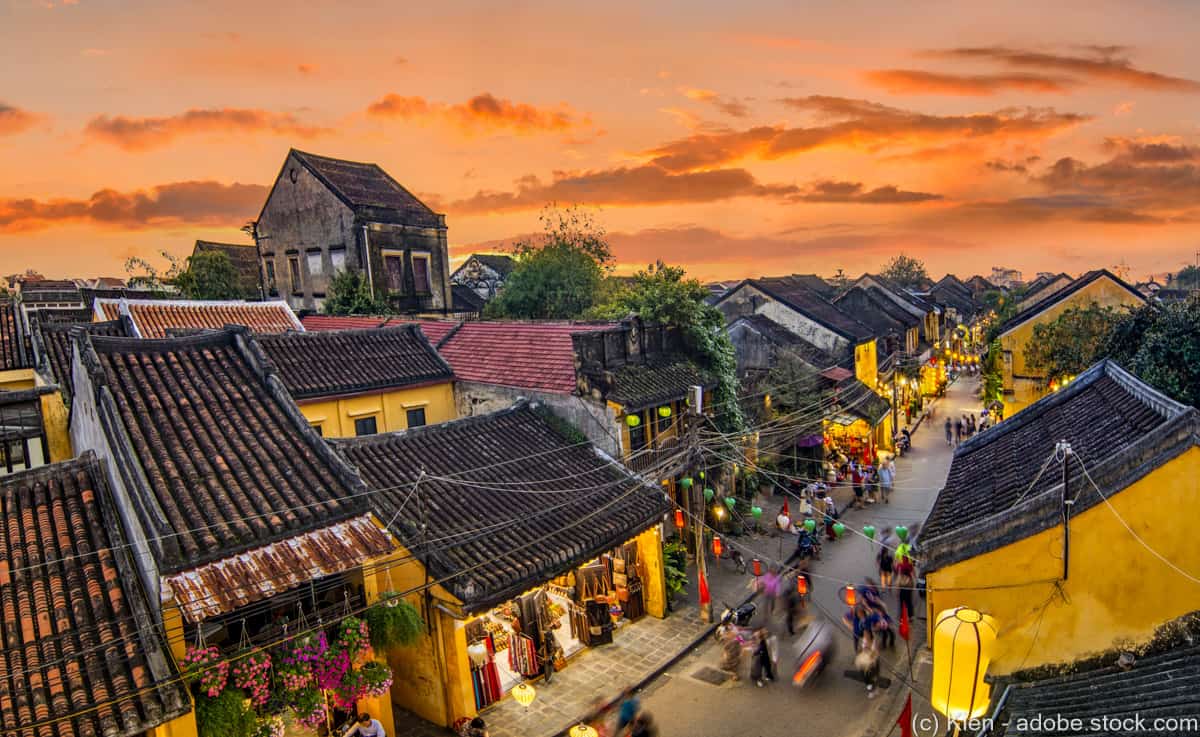



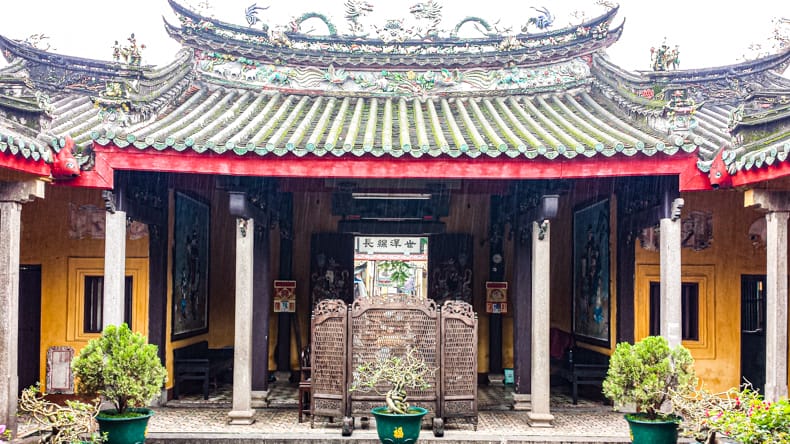


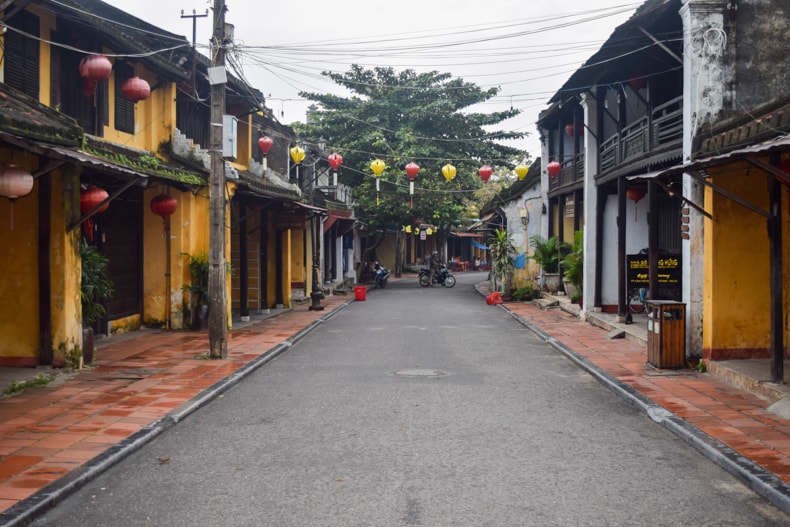
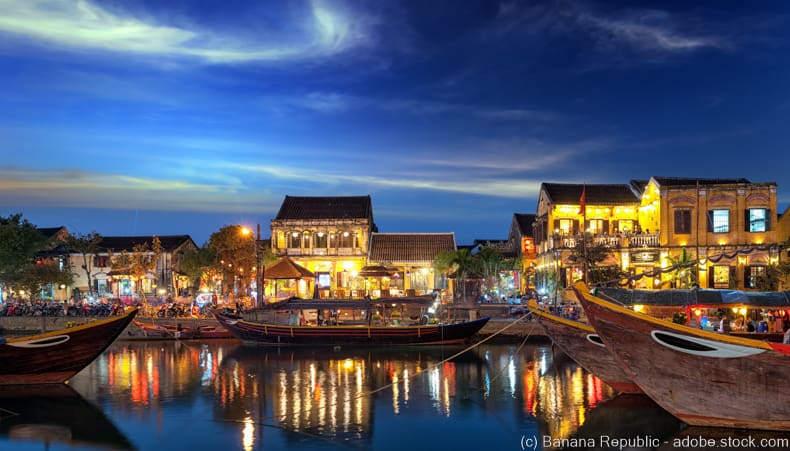
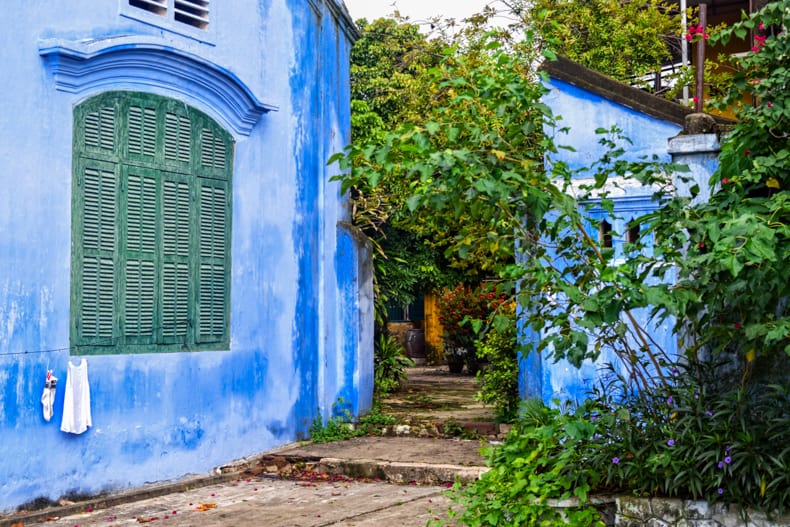


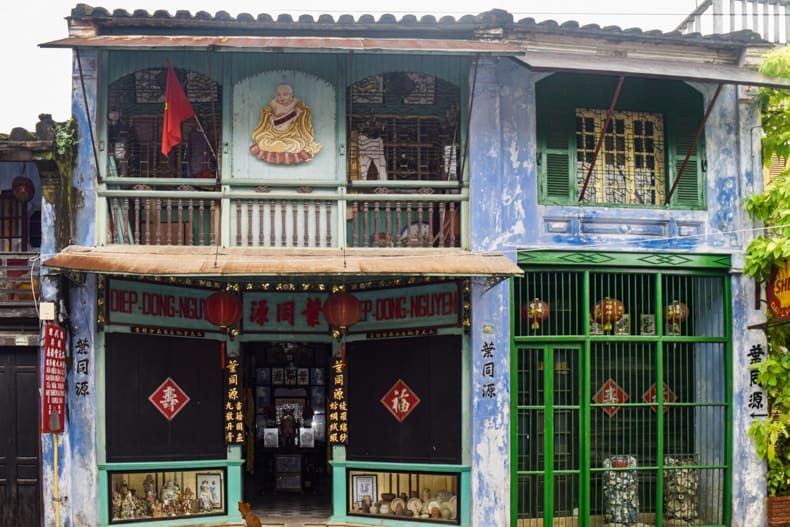


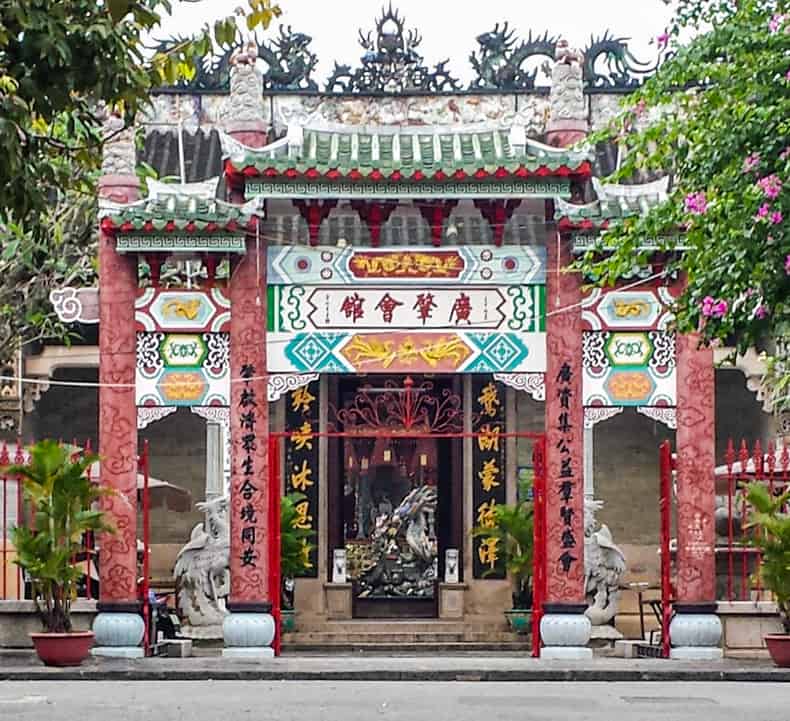


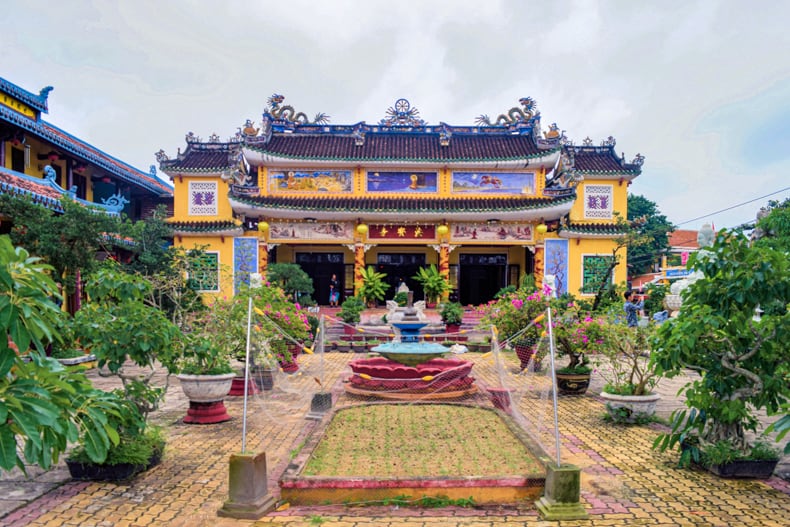
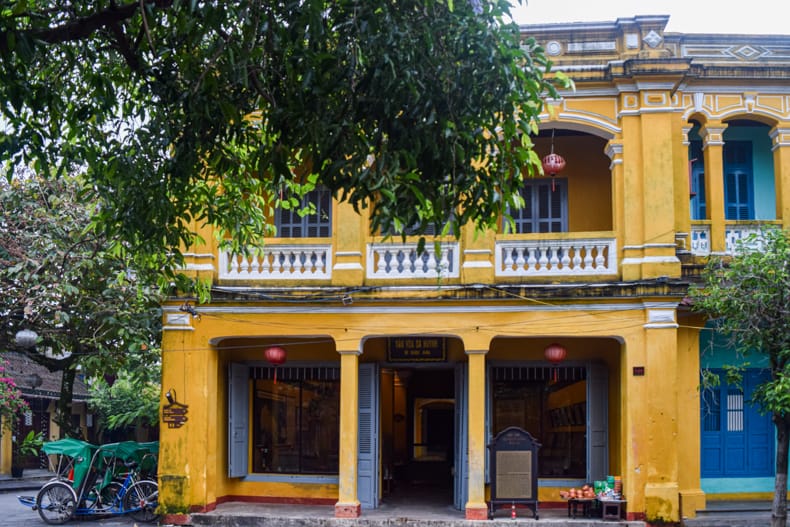






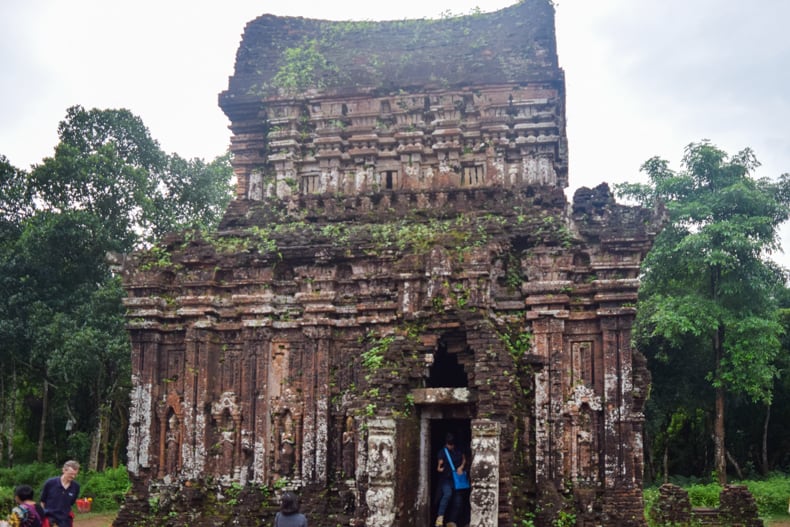
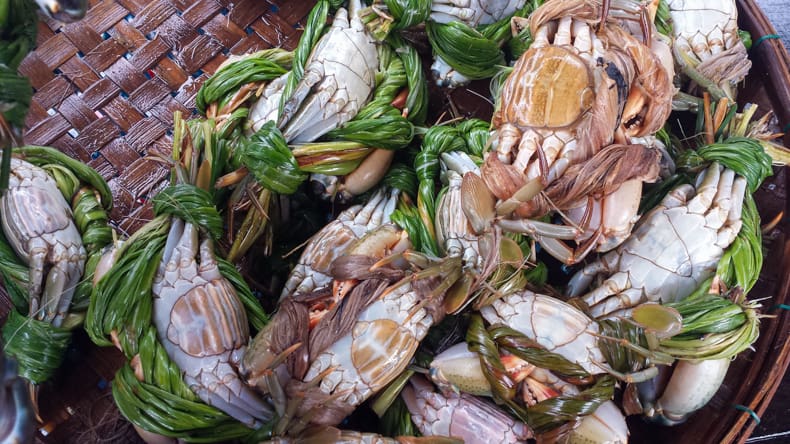















Nice article! I was in Hoi An too, liked it a lot but it was during rainy season, so should go back one day. Regards, Elisa of flitterfever.com
We are sorry we never made it to Vietnam when we were in SE Asia. Our son said it was his favourite place to visit. We would definitely travel for the food. But awesome to know it preserved its pre-colonial architecture too. With great day trips it would be good to use as a base. Interesting to read you need to pay a fee to get into the Old Town. But a great way to pay for building maintenance. Good that many sights are covered by this initial fee. We would absolutely take the shuttle bus to se the Ba Na Hills Golden Bridge! Great to get a Hoi An itinerary to help with future planning.
What a great & thorough guide! I have so far only spent a week in Vietnam & made it as far as Saigon & Nha Trang. It is on my list to go back & Hoi An sounds just up my street, especially for the food. I love the idea of taking a cookery class & when I can eventually travel again, it is my resolution to take one in each country I visit. Really useful guide, thank you!
Thanks so much, Sue. I hope you have a chance to get back to Vietnam one day. Hoi An is definitely worth it.
Might sound stereotypical but I’m dying to see Ba Na bridge. It just always looks so surreal. My son cham ruins reminds me of a little of Hampi. So intricate.